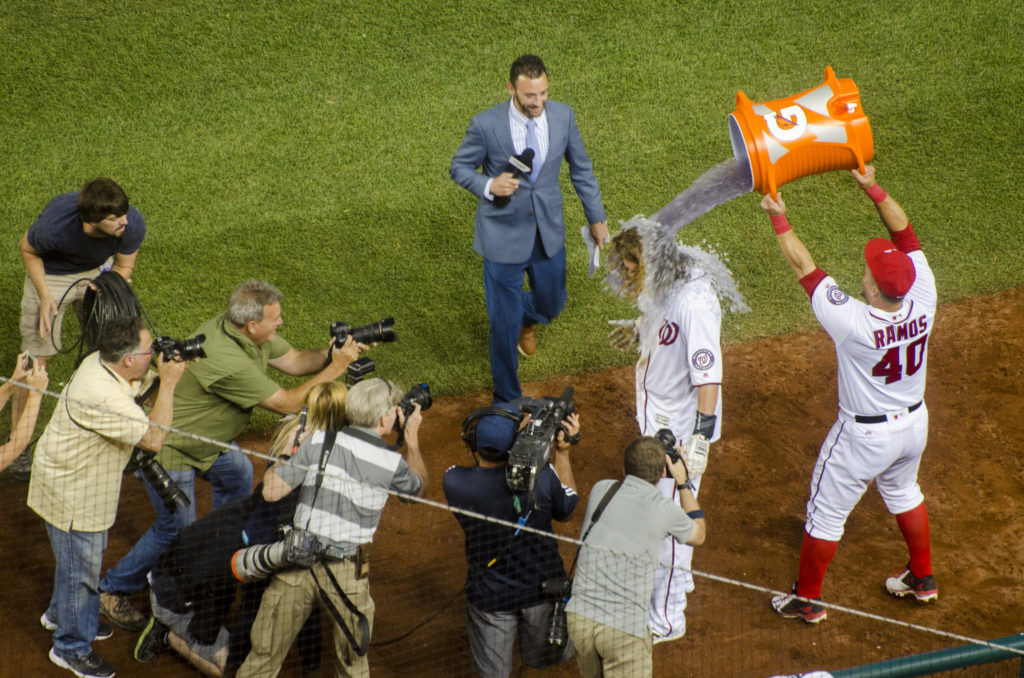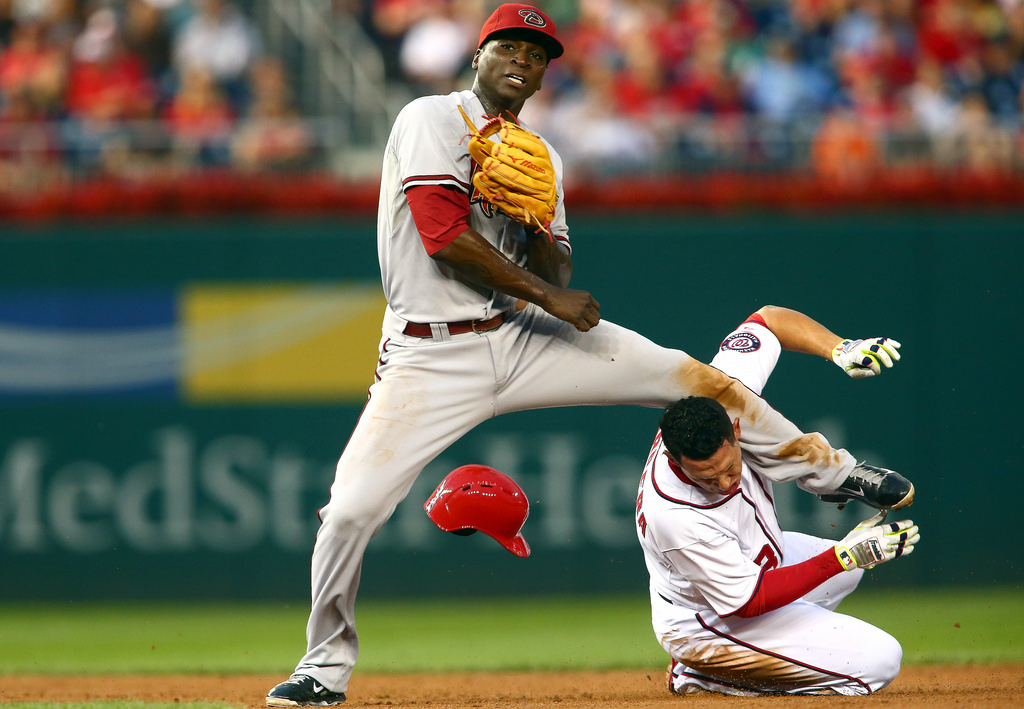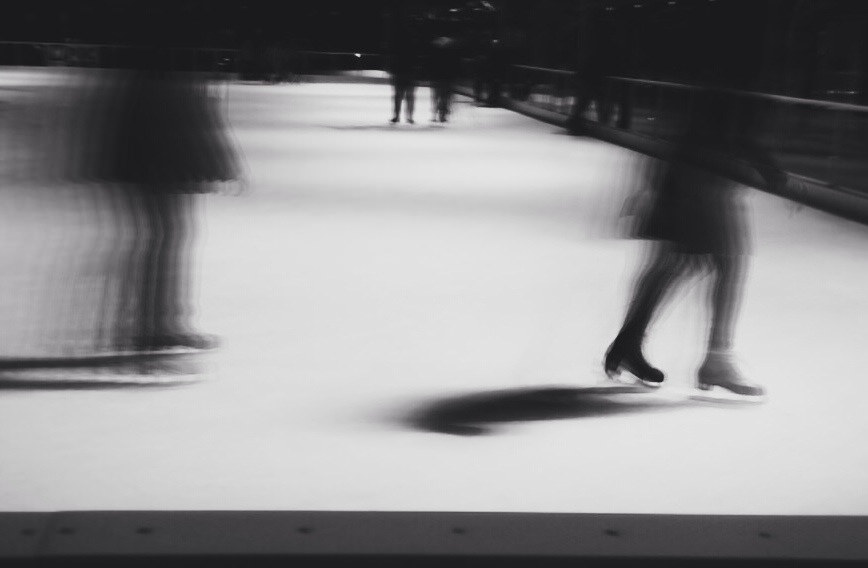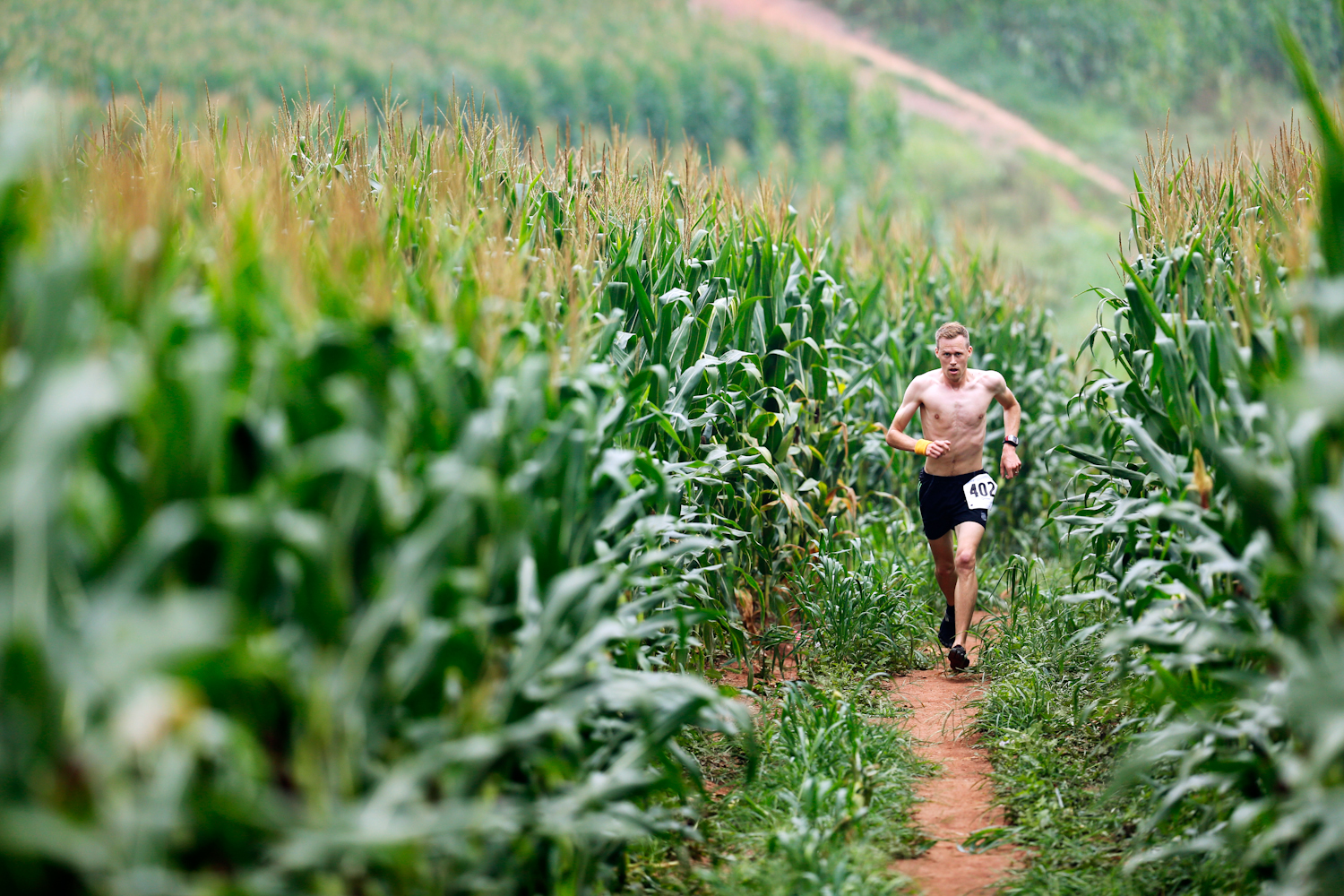
The comical moment where Nationals catcher Wilson Ramos dumps an ice bucket over his teammate Jayson Werth almost feels staged. Photographers huddle energetically, hoping to get their shot, as television reporter MASN Dan smiles and walks toward the freezing baseball player. Tim Brown’s framing makes this slapstick scene even more fantastic.


